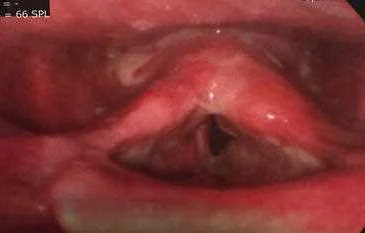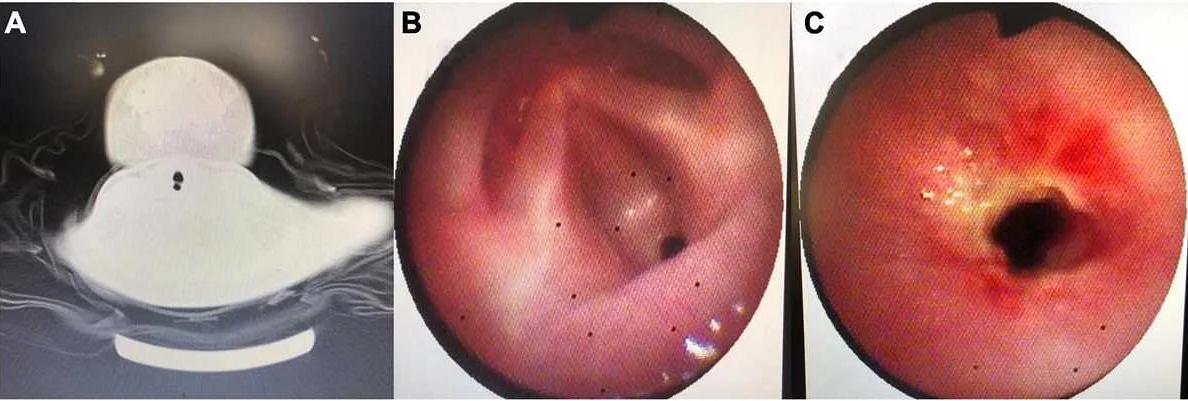Laryngeal Edema in Children: Symptoms, First Aid, and Treatment
Learn about the symptoms, first aid, and treatment options for laryngeal edema in children. Discover how to recognize this condition and what steps to take to provide immediate relief and seek appropriate medical attention.
Laryngeal edema, also known as swelling of the larynx, is a condition that primarily affects children. It occurs when the tissue surrounding the vocal cords becomes inflamed and swollen, leading to a narrowing of the airway. This can result in breathing difficulties and other potentially life-threatening complications if not treated promptly.
Symptoms of laryngeal edema in children can vary depending on the severity of the condition. Common signs include hoarseness, a barking cough, and difficulty swallowing. In more severe cases, a child may experience stridor, a high-pitched sound heard during inhalation, as well as respiratory distress and cyanosis. It is important for parents and caregivers to recognize these symptoms and seek medical attention immediately.
In cases of mild laryngeal edema, there are several first aid measures that can be taken to alleviate symptoms and prevent further complications. Encouraging the child to stay calm and upright, providing cool mist humidification, and offering small sips of water can help soothe the inflamed tissues and make breathing easier. However, it is crucial to remember that these measures are only temporary and medical intervention is necessary.
Treatment for laryngeal edema in children often involves a combination of medications and supportive care. Doctors may prescribe corticosteroids to reduce inflammation in the airway or administer epinephrine to relieve swelling. In severe cases where the child is struggling to breathe, intubation or a tracheotomy may be necessary to secure the airway. Close monitoring in a hospital setting is typically required until the swelling subsides and the child’s condition stabilizes.
In conclusion, laryngeal edema in children is a serious condition that requires immediate medical attention. Recognizing the symptoms, providing appropriate first aid, and seeking prompt treatment are crucial in ensuring the child’s well-being. With proper care and intervention, laryngeal edema can be managed effectively, reducing the risk of complications and allowing the child to make a full recovery.
Understanding Laryngeal Edema

Laryngeal edema refers to swelling of the larynx, which is the voice box located in the throat. This condition can be a serious medical emergency, especially in children, as it can cause difficulty breathing and potentially lead to respiratory distress.
The most common cause of laryngeal edema in children is an allergic reaction, often triggered by certain foods, medications, or insect stings. Other causes can include infections, trauma to the throat, or underlying medical conditions such as angioedema.
Symptoms of laryngeal edema may include a hoarse voice, difficulty speaking or making sounds, a high-pitched breathing sound, and a feeling of tightness or constriction in the throat. In severe cases, a child may have stridor, which is a loud, harsh, vibrating noise during breathing.
If your child is experiencing symptoms of laryngeal edema, it is important to seek immediate medical attention. In the meantime, you can offer comfort and support by staying calm and reassuring the child. It is important not to panic, as this can worsen their anxiety and breathing difficulties.
While waiting for medical assistance, you can help the child sit upright and lean slightly forward, as this position can help ease breathing. Avoid giving any food or drink, as swallowing may be difficult and could further block the airway.
Treatment for laryngeal edema will depend on the underlying cause and severity of the condition. In many cases, medications such as antihistamines, corticosteroids, or epinephrine may be administered to reduce swelling and improve breathing. In severe cases, the child may require a procedure called intubation, where a tube is inserted into the airway to maintain an open passage for breathing.
Overall, understanding laryngeal edema is crucial for recognizing the symptoms and providing appropriate first aid and treatment. By seeking immediate medical attention and following the advice of healthcare professionals, children with laryngeal edema can receive the necessary care to ensure their safety and well-being.
Signs and Symptoms of Laryngeal Edema in Children
Laryngeal edema, or swelling of the larynx, can be a serious condition in children. It is important for parents and caregivers to be aware of the signs and symptoms, as prompt medical attention is necessary. Here are some common signs and symptoms to watch out for:
1. Difficulty breathing: Laryngeal edema can cause a narrowing of the airway, making it difficult for children to breathe. They may experience shortness of breath, wheezing, or a high-pitched noise while breathing.
2. Hoarseness or change in voice: Swelling in the larynx can affect the vocal cords, leading to hoarseness or a change in the child’s voice. Their voice may sound raspy or strained.
3. Stridor: Stridor is a harsh, high-pitched sound that can occur when there is a blockage or narrowing of the larynx. It is often heard when the child inhales and can be a sign of laryngeal edema.
4. Coughing or choking: Children with laryngeal edema may have a persistent cough or may choke while eating or drinking. The swelling can interfere with the normal swallowing process.
5. Restlessness or irritability: Due to difficulty breathing and discomfort, children with laryngeal edema may become restless or irritable. They may appear anxious and have trouble sleeping.
6. Cyanosis: In severe cases, laryngeal edema can lead to a lack of oxygen in the bloodstream, causing the child’s skin to turn blue or purple. This is a medical emergency and immediate medical attention is required.
If you notice any of these signs and symptoms in a child, it is important to seek medical help right away. Laryngeal edema can quickly progress and lead to respiratory distress or even failure, so prompt treatment is crucial for the child’s well-being.
Recognizing the Severity of Laryngeal Edema

Laryngeal edema, or swelling of the voice box, can range from mild to severe. It is important to recognize the severity of laryngeal edema in order to provide appropriate first aid and treatment. Here are some signs to look out for:
Mild Laryngeal Edema:
– Hoarseness or changes in voice quality
– Mild difficulty swallowing
– Sensation of a lump in the throat
Moderate Laryngeal Edema:
– Increased difficulty swallowing
– Persistent hoarseness or loss of voice
– Increased noise or stridor when breathing
– Visible swelling or redness in the neck area
– Mild to moderate respiratory distress
Severe Laryngeal Edema:
– Severe difficulty swallowing or inability to swallow
– Severe respiratory distress
– Stridor or high-pitched wheezing when breathing
– Bluish color around the lips or nails
– Extreme anxiety or agitation
If you notice any signs of laryngeal edema, it is important to seek immediate medical attention. Severe laryngeal edema can be life-threatening and requires urgent medical intervention. Do not attempt to treat or manage laryngeal edema on your own, as it requires specialized care from healthcare professionals.
Note: This information is provided for educational purposes only and should not be used as a substitute for professional medical advice. If you or someone you know is experiencing laryngeal edema or any other medical emergency, please seek immediate medical attention.
First Aid Measures for Laryngeal Edema
If you suspect that a child is experiencing laryngeal edema, it is important to take immediate action as it can rapidly progress and become life-threatening. Here are some first aid measures you can take:
- Evaluate the child’s breathing and airway: Assess whether the child is having difficulty breathing, is making high-pitched or wheezing sounds, or is exhibiting signs of respiratory distress.
- Call for emergency medical assistance: If the child is showing severe symptoms or you are unsure about the severity, call for an ambulance or take the child to the nearest emergency department.
- Keep the child calm and upright: Maintain a comfortable position for the child, preferably sitting upright, as this can help ease breathing and minimize pressure on the airway.
- Administer prescribed medications: If the child has prescribed medications for managing laryngeal edema, such as bronchodilators or corticosteroids, administer them as directed by a healthcare professional.
- Loosen tight clothing: If the child is wearing any tight clothing around the neck or chest, remove or loosen it to ensure unrestricted airflow.
- Do not offer food or drink: To avoid choking or worsening the condition, refrain from giving the child anything to eat or drink until medical help arrives.
Remember, these first aid measures are not a substitute for professional medical care. Laryngeal edema can be a serious condition requiring immediate medical attention. It is essential to seek prompt medical help to prevent potential complications and ensure the child receives appropriate treatment.
Treatment Options for Laryngeal Edema in Children
When a child is diagnosed with laryngeal edema, prompt and appropriate treatment is crucial to ensure their safety and well-being. The treatment options for laryngeal edema in children include:
1. Oxygen therapy: Providing supplemental oxygen can help alleviate symptoms and improve the child’s breathing. In severe cases, oxygen may be administered through a mask or nasal cannula to ensure adequate oxygen supply.
2. Medication: Medications such as corticosteroids and antihistamines may be prescribed to reduce swelling and inflammation in the larynx. These medications can help relieve symptoms and improve the child’s breathing.
3. Epinephrine: In some cases, epinephrine may be administered to quickly reduce swelling and open up the airway. This can be done through an injection or by using an epinephrine auto-injector, commonly known as an EpiPen.
4. Intravenous fluids: If the child is experiencing severe symptoms and is unable to drink or eat, intravenous fluids may be given to maintain hydration and provide necessary nutrients.
5. Hospitalization: In severe cases or when symptoms are not improving with initial treatment, hospitalization may be necessary. This allows for more intensive monitoring and management of the condition, such as the administration of additional medications or the use of a breathing tube.
6. Allergen avoidance: If the laryngeal edema is caused by an allergic reaction, identifying and avoiding the allergen is crucial to prevent future episodes. This may involve making dietary changes, removing certain substances from the environment, or taking allergy medication as prescribed.
It is important to consult a healthcare professional for an accurate diagnosis and appropriate treatment plan for laryngeal edema in children. Prompt and proper treatment can help manage symptoms and reduce the risk of complications.